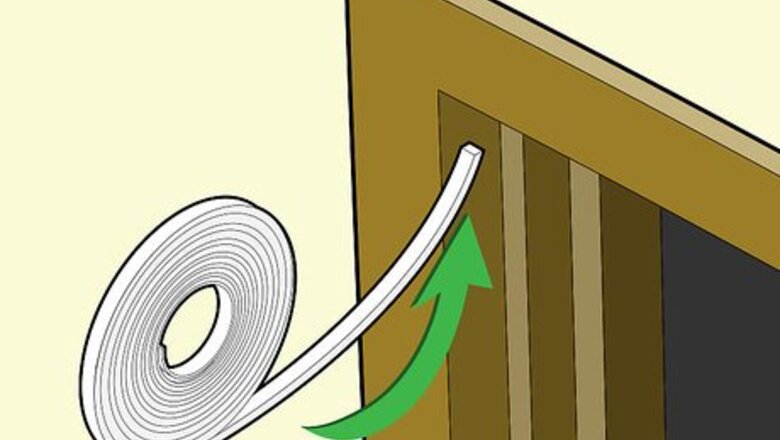
views
Sealing Doors and Windows
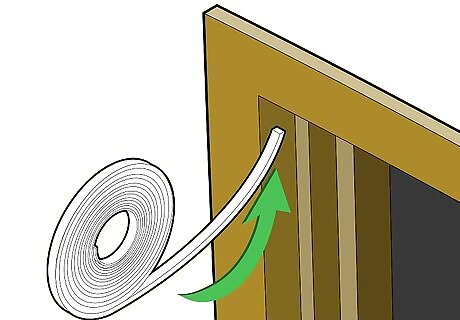
Replace old or damaged weatherstripping on the doors and windows. Buy a new roll of weatherstripping at your local hardware store. Install it in the gaps around any doors and windows in the room to prevent heat from escaping and cold air from coming in. Just pull off the old or damaged weatherstripping and apply the new roll using the adhesive that comes on the strips.
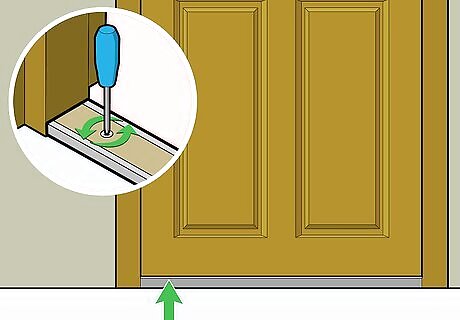
Raise the door thresholds if they’re adjustable. Check to see if there are screws in the thresholds leading into the room. If there are, turn the screws counterclockwise to raise the threshold and close the gap between the bottom of the door and the floor. Raise the threshold high enough that there’s just a tiny sliver of light coming through the crack.
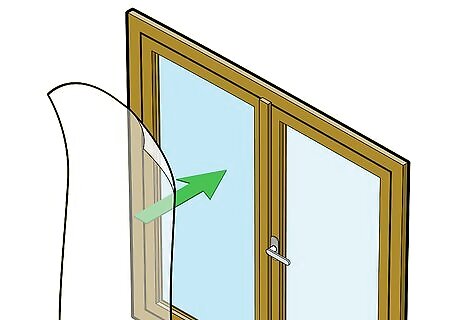
Put plastic film over the windows. Find plastic film designed specifically to cover windows at your local hardware store. Put the film up when it starts to get cold to insulate the room, and take it down after the winter or whenever it starts to warm up.

Hang up thick curtains over the windows. Keep them closed at night to help insulate the room from the cold.

Keep the curtains open during the day so heat from the sun gets in. Set a reminder on your phone or leave yourself a note so you don’t forget to open them in the morning.
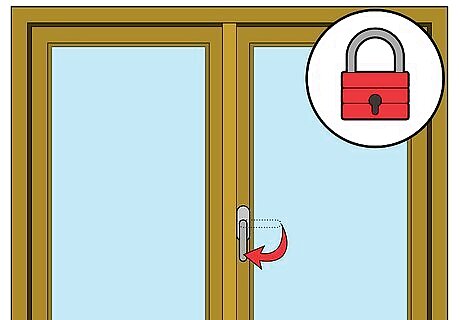
Keep the windows locked. Windows are the most sealed when they’re locked, so keep the windows in the room locked at all times to keep warm air in and cold air out.
Heating More Efficiently

Use a programmable thermostat to save money and energy. Program the thermostat so the heat is only on when you’re in the room. If you’re heating your bedroom, try programming the thermostat to drop a few degrees at night while you’re asleep.
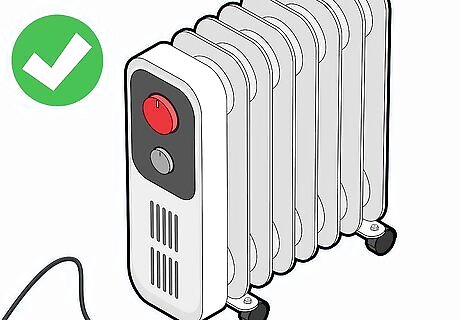
Use a portable heater in the room to lower monthly heating costs. Turn down the thermostat when you’re using the heater. Make sure you turn it down enough that the amount you save in heating is more than the extra money you’ll spend in electric costs because of the heater. For each degree you lower your thermostat, you will save around three percent on your heating bill. So if the increase in your electric bill is equivalent to six percent of your heating bill, you'd want to turn down the thermostat at least three degrees to get a savings. Use a portable heater that comes with a thermostat to avoid wasting energy by overheating the room.
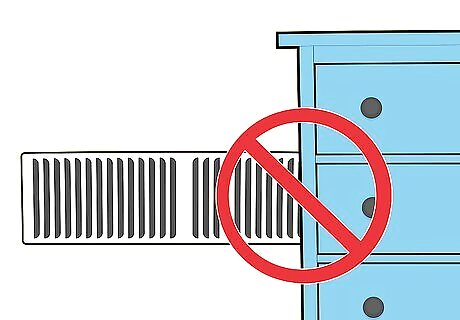
Move any furniture that is blocking the heating registers. Heating registers are the vents that the heat comes through, so make sure there aren’t any chairs or bookshelves on top of them or in front of them.
Keeping the Heat In
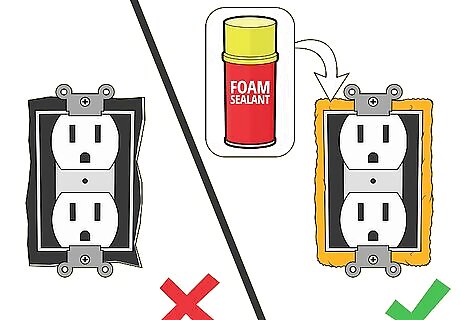
Fill the gaps around the electrical outlets in the room. Remove the plates covering the outlets and fill the space between the outlets and the wall with acrylic latex caulk. Once the caulk dries, put the plates back on. You can find acrylic latex caulk at your local hardware store. Use a foam sealant to fill larger gaps around the outlets.

Use a chimney balloon to stop heat from escaping up the chimney. Measure the chimney in the room and order the appropriate size chimney balloon online. Blow up the balloon and put it in the chimney to keep warm air in and cold air out. Don’t worry if you forget to take the chimney balloon out before you start a fire; they’re designed to deflate when a fire is started.

Put tin foil behind any radiators in the room. Line the section of wall directly behind the radiator with a high-quality tin foil to help reflect heat from the radiator back into the room.
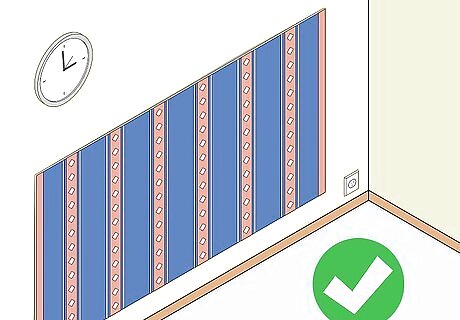
Hang tapestries or quilts on the walls to insulate the room. Use thicker fabrics for more insulation.


















Comments
0 comment